Paid advertising, when executed effectively, has the power to catapult your business website’s traffic to unprecedented heights. In today’s digital landscape, where competition for online visibility is fierce, harnessing the potential of paid advertising is not just an option; it is a necessity. By following best practices and adopting a strategic approach, you can ensure that your investment in paid advertising yields significant returns. First and foremost, understanding your target audience is crucial. Before launching any paid advertising campaign, conduct thorough research to identify your ideal customer profile. What are their demographics, interests, and pain points? Armed with this knowledge, you can create highly targeted ad campaigns that resonate with your audience. This not only ensures that your ads are seen by the right people but also increases the likelihood of conversions.
Keyword research is another vital component of a successful paid advertising strategy. By selecting the most relevant keywords for your industry and products/services, you can optimize your ad copy and bids to appear prominently in search engine results. Additionally, long-tail keywords should not be overlooked, as they often have lower competition and can deliver highly qualified traffic to your website. Crafting compelling ad copy is an art form that should not be underestimated. Your ad headlines and descriptions should be concise, My Traffic Powerline Scam attention-grabbing, and tailored to your target audience’s needs. It is essential to highlight the unique selling points of your products or services and emphasize how they can solve your customers’ problems or fulfill their desires. A/B testing different ad variations can help refine your messaging and improve click-through rates. Effective landing pages are the linchpin of a successful paid advertising campaign. When users click on your ad, they should be directed to a well-designed, user-friendly landing page that provides a seamless and engaging experience.
Your landing page should align with the ad’s message and offer a clear call to action CTA. Whether it is making a purchase, signing up for a newsletter, or requesting more information, the CTA should be prominently displayed and easy to follow. Budget management is a critical aspect of paid advertising success. Set clear budgets for your campaigns and monitor your spending regularly. Tools like Google Ads and Facebook Ads offer budget control features to help you stay on track. It is essential to strike a balance between bidding competitively for high-value keywords and managing your budget effectively to maximize ROI. Tracking and analytics is your compass in the world of paid advertising. Implement tracking tools like Google Analytics or conversion pixels to monitor the performance of your campaigns. Analyze data on click-through rates, conversion rates, and cost per acquisition to gain insights into what’s working and what’s not. Use this information to optimize your campaigns continually, reallocating budget to high-performing ads and pausing or tweaking underperforming ones.
